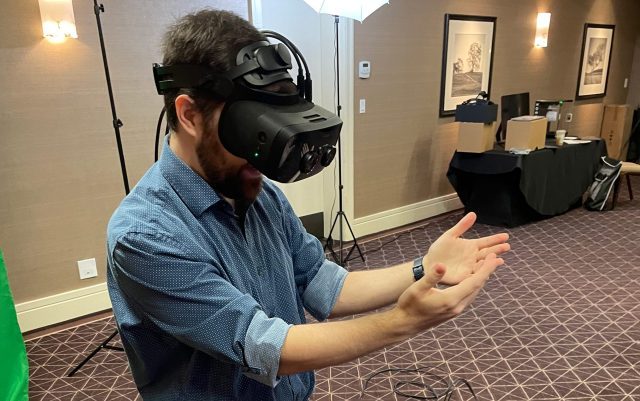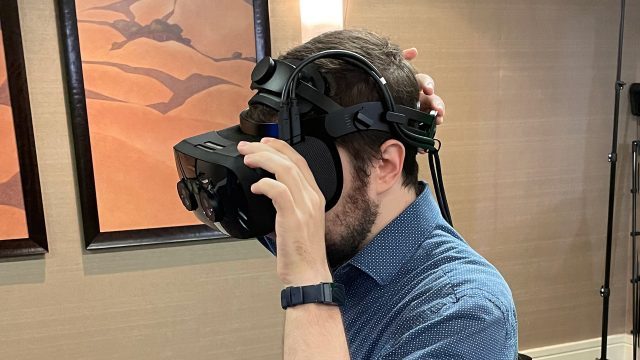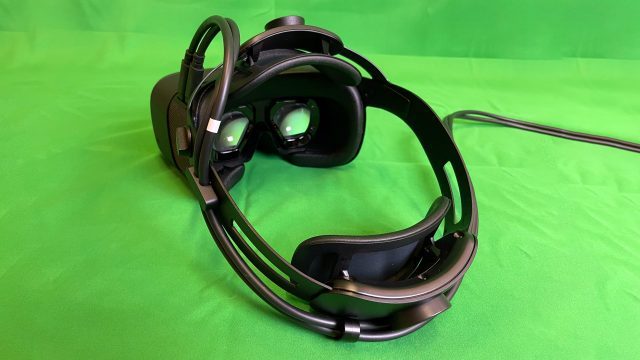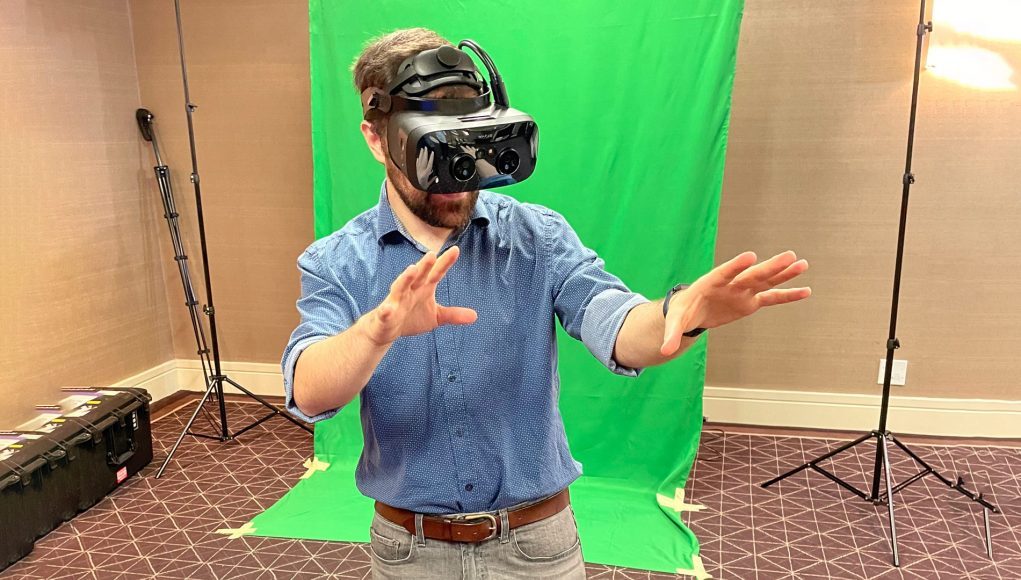Passthrough AR on XR-3

XR-3 isn’t just for VR though. The headset includes a bevy of sensors which give it both inside-out tracking and full-color passthrough AR including LiDAR for real-time depth-sensing.
While the cameras on the front of the headset don’t quite match the resolution of the displays, they’re definitely higher resolution than what I’ve seen through any other passthrough AR headset, and they cover nearly the entire field-of-view of the lenses.
While pure passthrough video works very well, the headset can of course also project augmented reality visuals into the world around you. To demo this, Varjo spawned a 1:1 scale car in the room I was standing in. Combined with Ultraleap hand-tracking and the headset’s LiDAR, I could reach out with my real hands to open the car’s doors, and even see my real hands occluding the augmented imagery which made it feel all the more real. Granted, the edges of the hand-occlusion are still too jagged to make it all perfectly seamless.
While the headset’s passthrough AR capabilities are impressive (including some absolutely magic VFX tech which maps the surrounding room onto the reflections of virtual objects), I did notice a bit of latency, especially between the passthrough view of the real world and the virtual objects layered over top (ie: they didn’t feel perfectly ‘locked’ to the same space). I may be a bit spoiled with Oculus’ ‘Passthrough+’ tech on Quest 2, which offers a remarkably low latency experience even if the view is much lower resolution than what you can see through XR-3.
XR-3 Ergonomics

The other big change to Varjo’s XR-3 over its predecessor is the ergonomics. XR-3 is purportedly lighter, but it’s still a fairly bulky headset at 980g. Luckily the XR-3 has a brand new headstrap that’s much more adjustable.
The major parts consist of a top strap to keep the headset up, and a rear strap that swoops down low to keep it balanced. Both have dials which you can turn to tighten them as needed. On top of that there’s dials right near your temples which allow you to tilt the visor up or down without putting additional pressure on your brow or face.

All in all it feels like an improvement, and I especially like the ability to tilt the visor; everyone has different brow and cheek topology, and this should make the headset adjustable to a wider range of users.
– – — – –
Varjo is burning the candle at both ends. On one side, they’re improving their hardware and delivering better visuals with each iteration. On the other side, they’re reducing the cost of their headset to the point that it’s becoming increasingly viable for more than just Fortune 500 companies. It’ll be years until we see this kind of visual quality in a mainstream headset, but this glimpse shows not only that it’s possible, but that it’s definitely coming.







